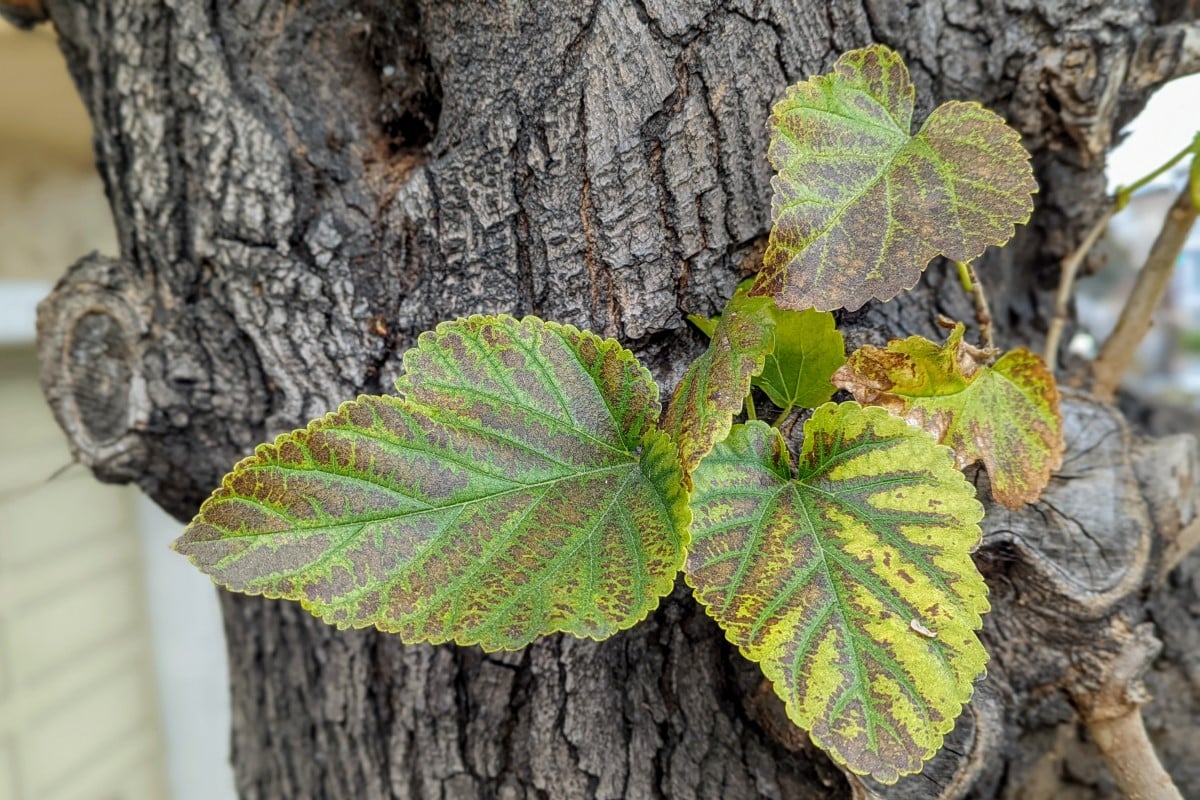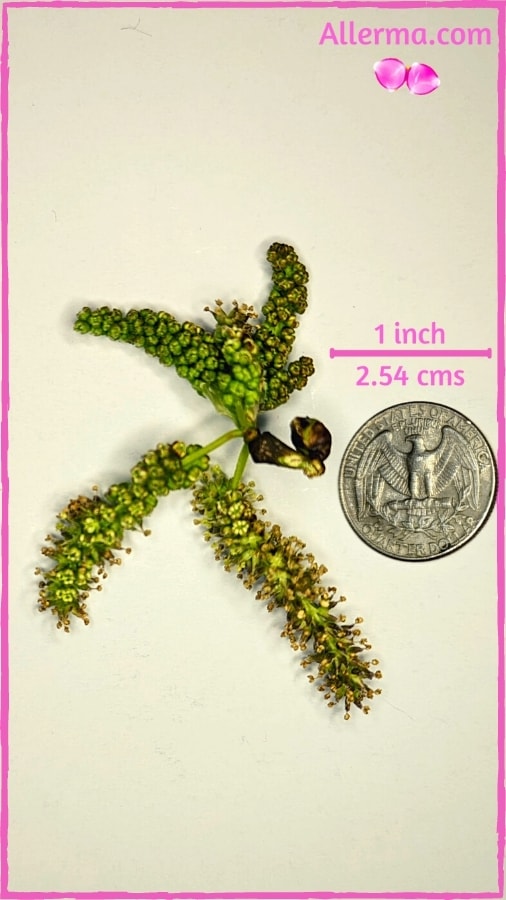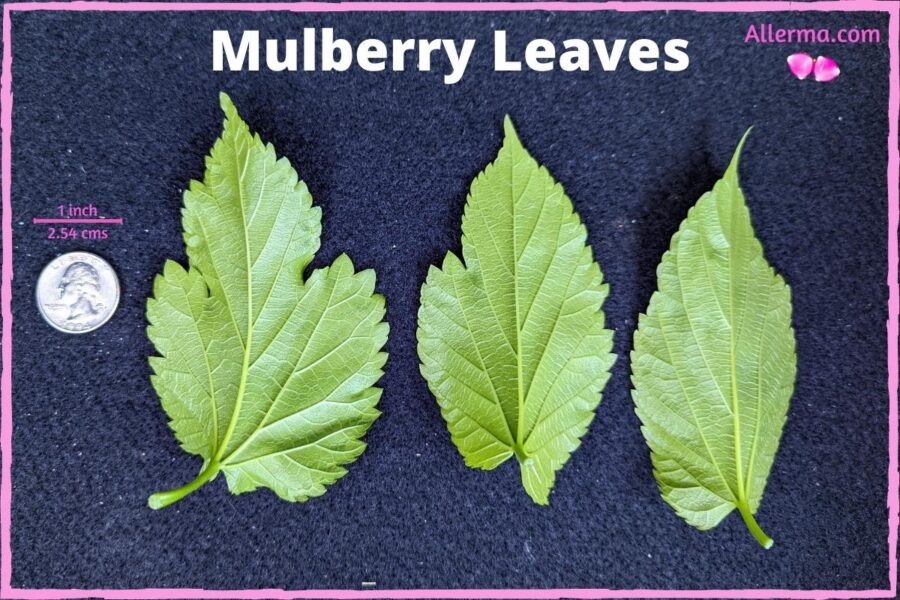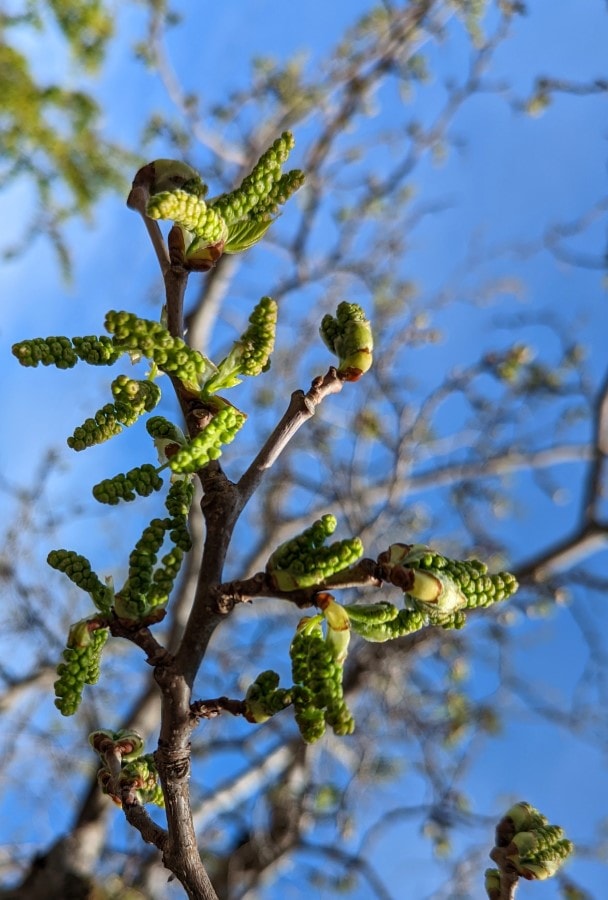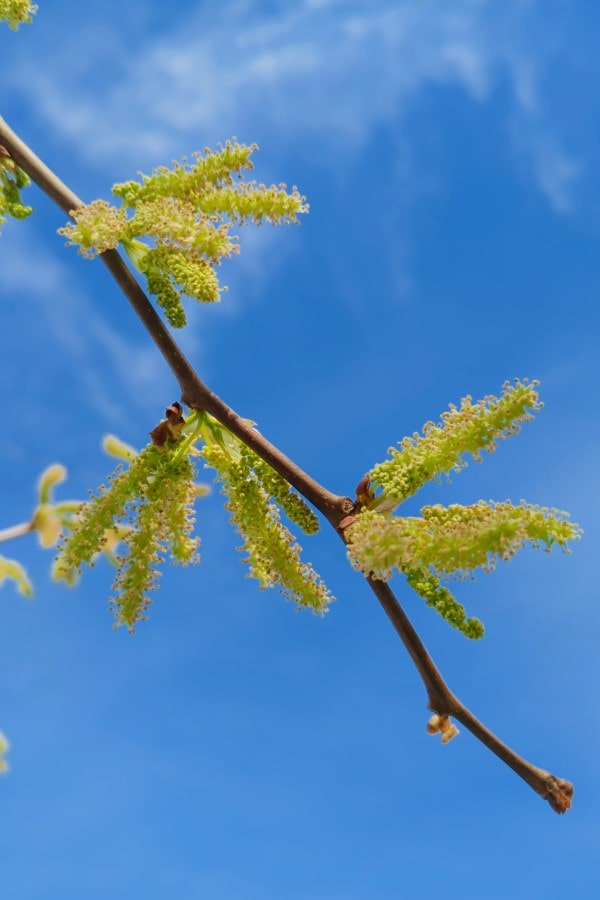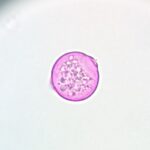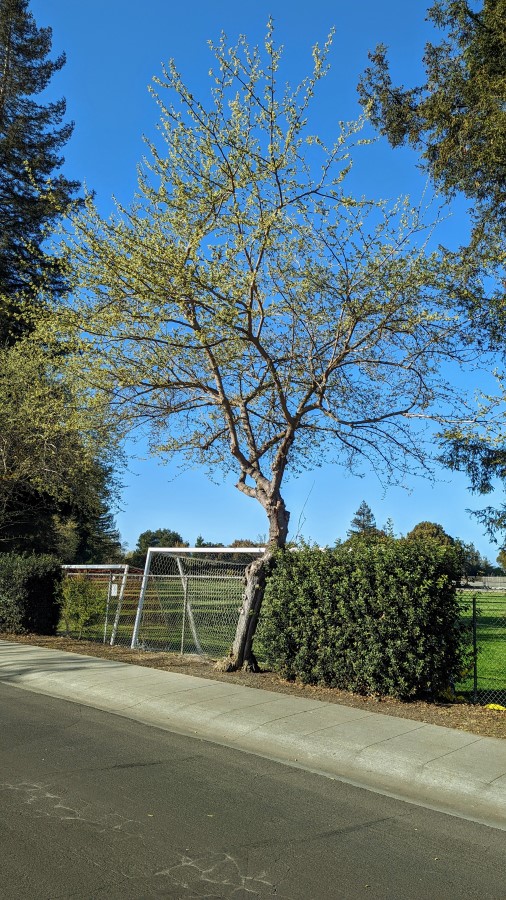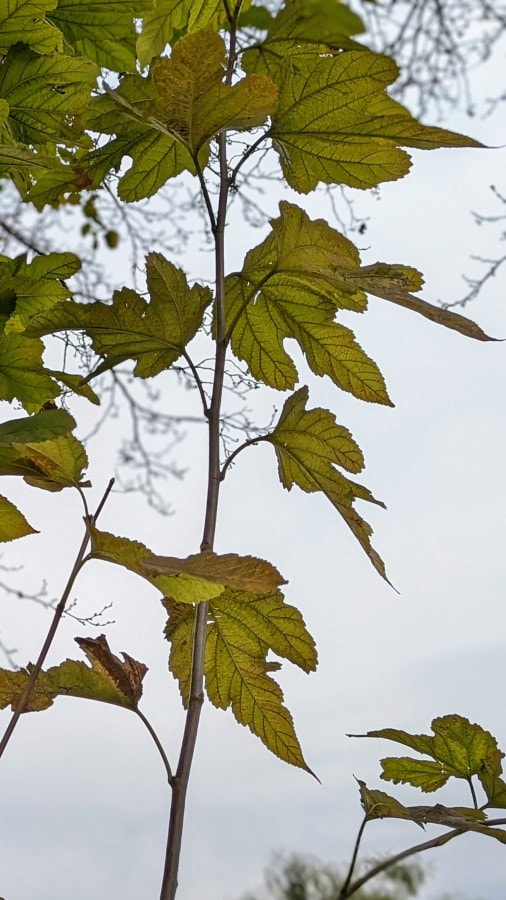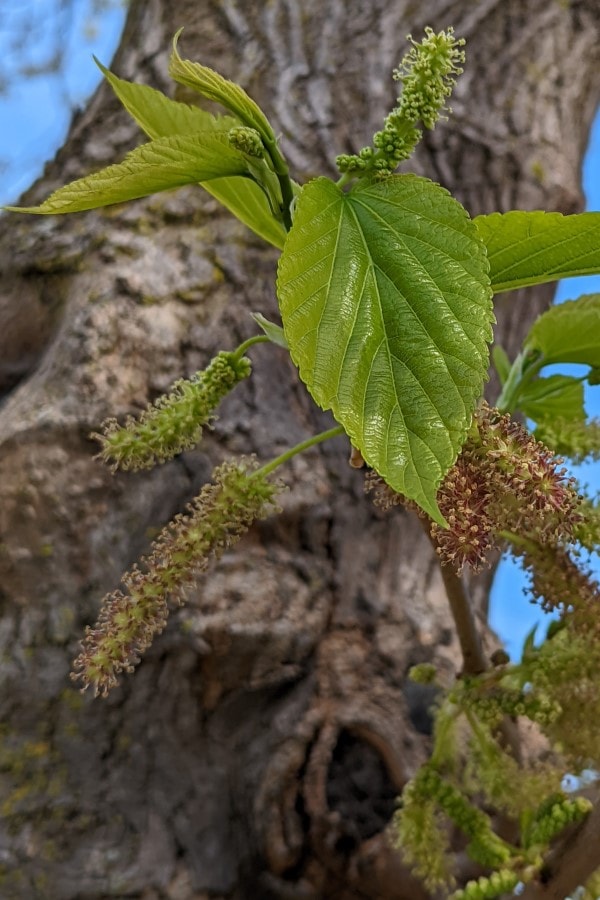In this article, with the help of photos, we will learn about mulberry pollen allergy (Genus: Morus). Also, we will learn how and when their pollen spreads.
Due to its hardiness, white mulberry grows all over the US. The red mulberry on the other hand grows mostly east of Texas.
Mulberry tree allergy facts and figures (Morus)
| Mulberry tree allergy profile | Morus |
|---|---|
| Pollen season | Spring |
| Pollination type | Wind-transported; releases abundant pollen in the air, which travels well with the wind because of its smaller size. |
| Gender | Generally dioecious: Male and female flowers grow on separate trees. Only male trees are responsible for pollen allergies. (Monoecious species do exist but they are an exception) |
| Cross-reactivities with other pollen | Only among mulberry pollen. |
| Pollen source | Yellow-green, 1 to 2 inches long, male flowers (catkins). See pictures below. |
| Tree leaves | Serrated leaves can grow anywhere from 5 to 10 inches long. Mature leaves can form lobes. |
| Tree fruit | In dioecious trees, only female trees bear fruits, which is a fleshy drupe, similar to blackberries, but for some species, the fruit is longer. |
| Tree shapes and sizes | Small to medium-sized trees. Most city trees are 10 to 30 feet tall. |
How to know if a mulberry tree is releasing pollen?
Only male mulberry trees release pollen. Unfortunately for the allergy sufferers, most city mulberry trees are males. The female trees are avoided because the fruit can clutter sidewalks and attracts birds.
The male trees start to bloom in winter. The green catkins appear before leaves and have a beady formation. As catkins mature and start releasing pollen in early spring, the tree canopy looks yellow-green.
Each tree releases pollen for four to six weeks each year. Eventually, the mature catkins fall off the trees.
When do mulberry trees releases pollen?
Both white and red mulberry trees release pollen during March and April in the San Francisco Bay Area. The peak is generally hit towards the end of March.
Although mulberry trees are not as common as redwoods, cypress, and oaks, I still catch enough pollen in the Bay Area air surveys. This is because each tree is capable of producing billions of pollen. Furthermore, the mulberry pollen is much smaller than pollen of other trees. So, it stays afloat longer and travels farther with the wind.
If you are allergic to mulberry pollen, keep an eye on the trees in your neighborhood to observe their bloom during spring.
However, if you live in the San Francisco Bay Area, you have an easier way out! I do regular tree inspections and air sampling in the area to provide reliable pollen updates on our website
What does the mulberry pollen look like?
Mulberry pollen has two protruding pores, which makes them unique and easy to identify. The pollen is diporate, oval-shaped, and about 20 microns in size.
Under the microscope, the mulberry pollen stands out because it stains lightly compared to the pollen of other plants.
To see the pollen of other plants and trees, visit our pollen library.
What do mulberry trees look like?
The trees have larger leaves that can range from 3 to 10 inches long. The leaves are serrated and can develop lobes upon maturation. The trees are generally small to mid-sized.
Most city trees are 10 to 30 feet tall, but some trees could grow up to 60 feet.
Key takeaway
Mulberry pollen allergies during spring are common in the US. The trees are found all across the US. The pollen is smaller than most of the other airborne pollen. As a result, it stays afloat longer and travels farther.
Considering the widespread presence of mulberry, all allergy testing facilities generally have mulberry pollen in their test panels.
The other trees that bloom alongside mulberry during spring are pine, oak, sycamore, cypress, birch, poplar, and sweetgum.
Sources
References
- Allergy Plants by Mary Jelks, M.D.
- Plant identification terminology by James G. Harris and Melinda Woolf Harris (Second Edition)
- Sampling and indentifying pollens and Molds by E. Grant Smith
- The trees of golden gate park and San Francisco by Elizabeth McClintock PhD.
All pictures, unless otherwise credited to another source, are taken by the author and are copyrighted material. The pollen picture is taken in our aerobiology lab using an Olympus compound microscope. The use of pictures is permitted with a link back to the source page on the internet, or, an attribution to allerma.com on the printed material.

